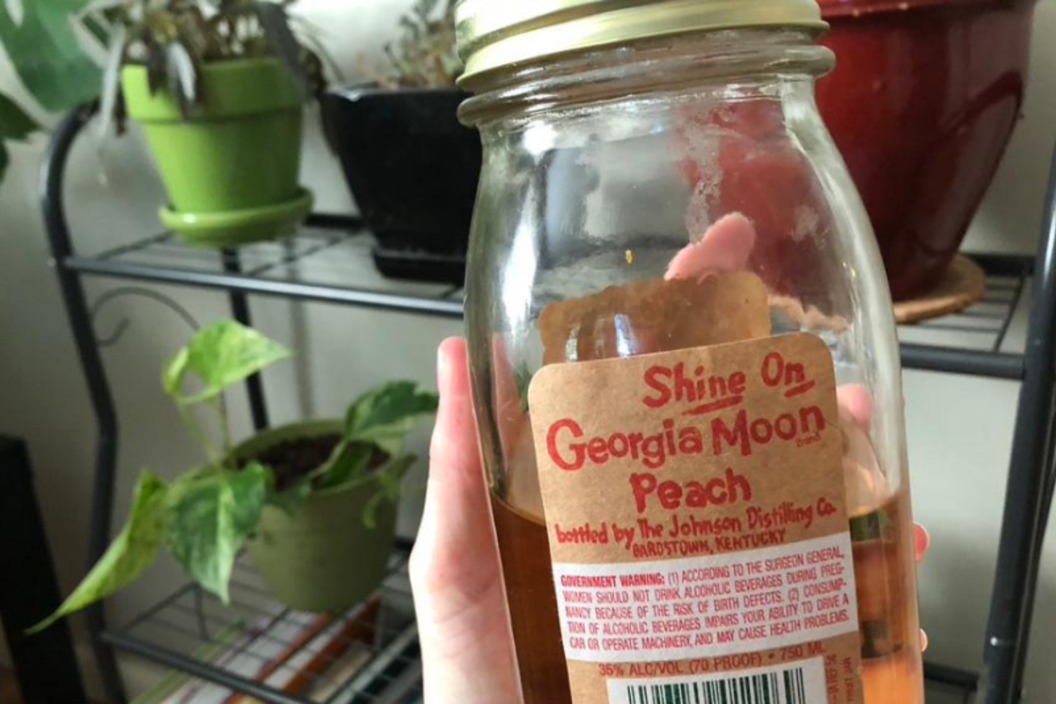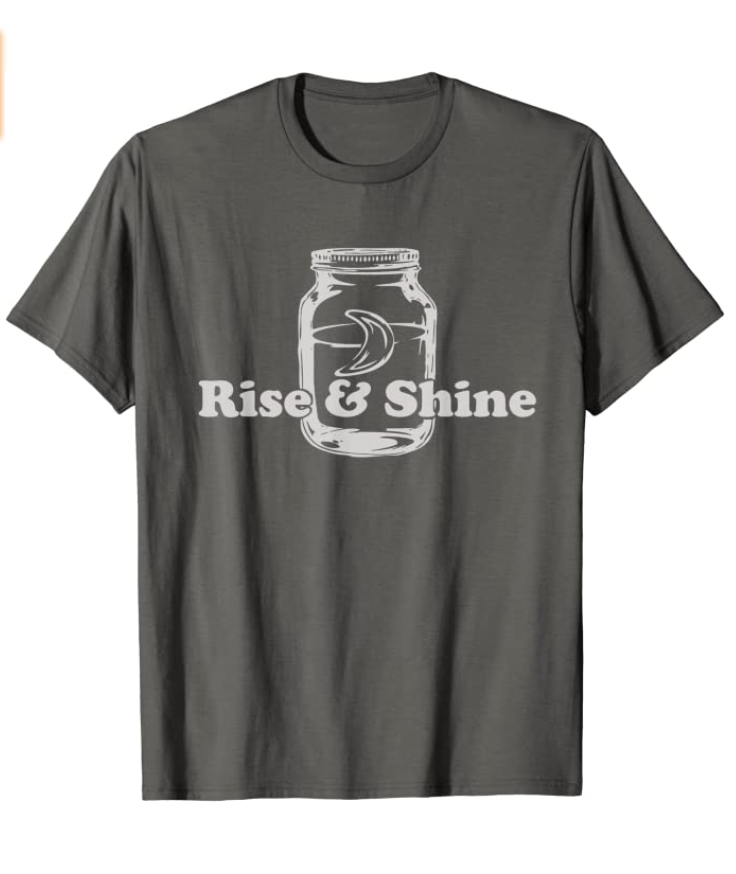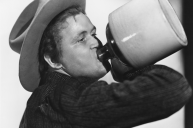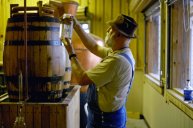Moonshine is as American as apple pie and baseball, and you can probably find it for sale in most liquor stores these days. If you've never had 'shine, maybe it's because you think it's paint thinner in a mason jar; nothing could be further from the truth, at least these days. It's strong, yes, but moonshine alcohol content may not be as much as you think. In fact, some alcoholic drinks even have a higher proof!
Videos by Wide Open Country
If you've looked through our infused moonshine recipes, you'll see that you can easily swap vodka or Everclear in for the moonshine; there's a reason for that. Moonshine is really just un-aged whiskey. Made from a mash of cornmeal, sugar, yeast, and water, the liquid that comes out of the distilling process is clear, which is why you may also hear it called white whiskey. Technically, you can use rye or barley instead of corn, but almost all traditional moonshine is made with corn, which is why you may also see moonshine called corn whiskey sometimes.
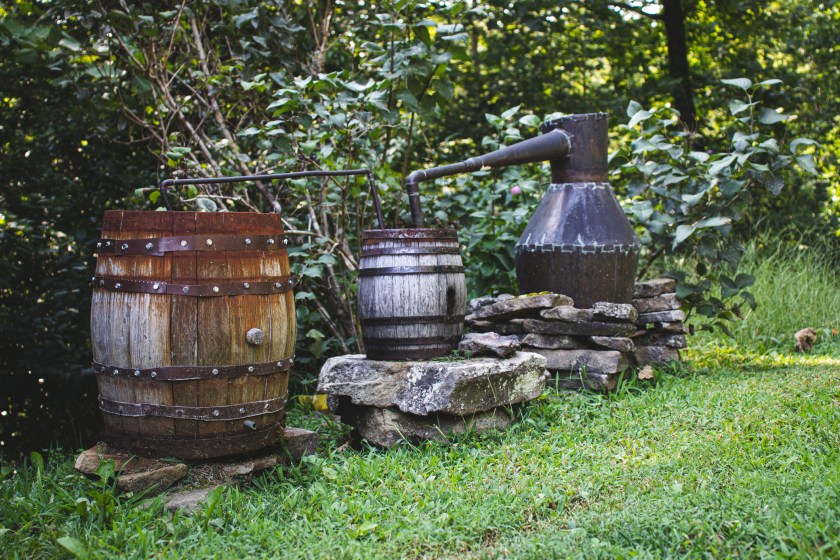
Getty Images/Ben Whitaker
The History of Moonshine
The name "moonshine" originates from when this spirit was secretly made under the light of the moon, which moonshiners did to avoid being discovered by the authorities. Making moonshine was a popular hobby during the Prohibition era, when it was illegal to produce or drink alcohol. Although it was outlawed, many Americans still wanted to get their fix, and bootleggers and moonshiners filled this need by distilling their own secret spirits.
Making moonshine was especially popular in the Appalachian mountains, where the limited road network made it difficult for cops to enforce the law. The "runners" responsible for transporting the illegal substance could lose the cops on these confusing roads when they were on the verge of being caught. Incidentally, these drivers eventually formed NASCAR when Prohibition had ended and they suddenly had no use for their driving skills.
The reputation of moonshiners during the Prohibition era ranged from heros rebelling against the government and dangerous criminals, depending on who you asked. However, many moonshiners were simply farmers using the extra income to survive tough crop years, since low-value corn could be made into highly valuable whiskey. These days, moonshine is still produced, and is used to describe any homemade illegal alcohol.
What's the Fermentation Process of Moonshine?
The fermentation process is the same, and what comes out of the moonshine still is the same thing that comes out of any other kind of still; it depends on what your main ingredient is. If it's potatoes, you get vodka. If it's barley, it's Scotch. And if it's corn, you get bourbon. The only fundamental difference between moonshine and bourbon is the aging process, which is what gives bourbon its distinctive color and taste.
When we talk about the alcohol content of moonshine, though, it's important to note the difference between the version made in a commercial distillery and the one made in a homemade still hidden on the side of a Kentucky mountain. Technically, moonshine means a liquor that is made illegally. But in recent years, moonshine has become so popular across the United States that it's being made and sold legally and openly in many places.
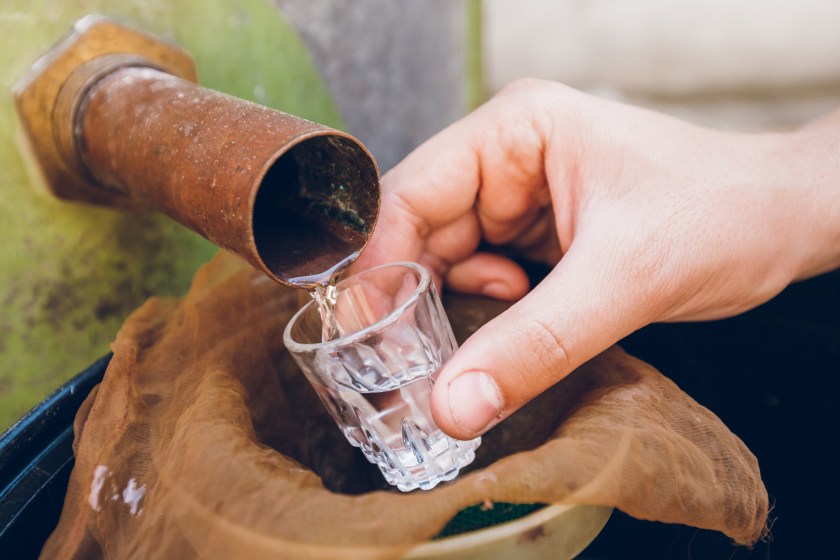
Getty Images/urbazon
What's the Alcohol Content of Moonshine?
As an alcoholic beverage, moonshine does have a high alcohol content; it's not called white lightning for nothing. The kick you get from drinking it is real, but it's not any more dangerous than drinking any other type of high proof hooch. Legal moonshine is held to the same standards as other distilled alcohol, which means it's made in sanitary conditions with known ingredients (unlike during Prohibition, when moonshiners did add things like bleach, rubbing alcohol and, yes, paint thinner to give the alcohol more of a kick).
Technically, moonshine can be distilled to about 95 percent alcohol, but that's probably not anything you want to drink, at least not too often. Everclear, the pure grain alcohol, is sold as a 190 proof/95 percent ABV (alcohol by volume). In fact, if you see a moonshine labeled as a "neutral spirit," it's closer to Everclear than whiskey.
In the United States, corn whiskey must be distilled to no more than 80 percent ABV (160 proof) and bottled at no more than 62.5 percent. The final product is usually bottled at around 50 percent, though you may find some a little lower and some a little higher.
Today, moonshiners can test the alcohol content with a proofing hydrometer, which measures the density of a liquid in relation to the density of water, allowing distillers to determine both the potential amount of alcohol content and the actual alcohol content. But there's another way to go about proofing your homemade moonshine. (Note: Distilling moonshine without permits is still illegal, so don't try moonshining at home, please even if you live in Appalachia)
Experienced Appalachian moonshiners use something called the Shake Test to proof moonshine. They'd put some of the distilled liquid in a mason jar and shake it. If they saw large bubbles that dissolved quickly, it meant that the shine had a high alcohol content. If the liquid had smaller bubbles that moved more slowly, the moonshine had a low alcohol content.
It used to be that you had to know a bootlegger to get your hands on some moonshine, but today you can find moonshine in pretty much any liquor store. You can also find traditionally infused moonshines or make your own.
Editor's Note: Products featured on Wide Open Eats are independently selected by our editors. However, when you buy something through our links, we may earn a commission.
This post was originally published on April 15, 2021.
